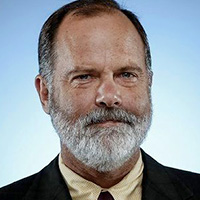THIS ISSUE OF BLUEPRINT IS SEVERAL THINGS AT ONCE: It’s Part 2 of our sustainability series, following up on the spring look at power with a fall take on water. It’s also an opportunity to examine two of Los Angeles’ most important political figures — the city’s mayor and council president. Finally, it’s a look at how power works, and doesn’t work, in Los Angeles — whether it’s the region’s infamous fragmentation and the problems that creates in water prices or the subtleties of political leadership in and around city hall.
As these stories and interviews remind us, Los Angeles is a complicated place to solve big problems, and none is bigger than L.A.’s historic quest for water.
That history can be traced to any number of events, but probably the landmark moment would be William Mulholland’s discovery and hijacking of the Owens River at the turn of the last century. Mulholland, the legendary Department of Water and Power chief, left a contradictory legacy: In the Owens Valley, he remains a magnificent villain, and any chance that valley had to become a thriving farmland ended with his acquisition of the land and water rights used to divert the river to Los Angeles. Still, that land was bought, not stolen, and one of the world’s great cities would not have existed without it.
As Mayor Richard Riordan, the first Los Angeles mayor to visit the Owens Valley since the construction of the aqueduct, liked to say: “We stole it fair and square.” (I was with Riordan on that trip, incidentally. We flew in a Department of Water and Power helicopter.)
The theft, fair or not, also established Los Angeles as a city dependent upon imports. For most of our history, water has come from the Sierras (and from the Colorado River and Sacramento Bay Delta), while power has been generated by coal plants in Utah and Arizona. As Mayor Eric Garcetti notes in this issue, the city has long been in the strange position of flushing out rain that falls here while importing water from far away.
That’s changing.
Guided in part by research featured in this issue, as well as directives from the mayor, Los Angeles is committing itself to a water future very different from its past — one of conservation and reliance on local sources. The mayor has called for 20% per capita reductions in water usage by next year, and the DWP is aggressively subsidizing the replacement of lawns with drought tolerant plants, as well as programs to save rainwater and discourage waste.
Los Angeles’ history in this area is of grand projects and extraordinary impact — giant aqueducts and aggrieved neighbors. That history gave the city a chance to be. But its future may be more modest, living in closer harmony to the local environment and treasuring the water that is here.
Getting there won’t be easy. It will require the leadership of those featured in this issue and the intelligence of the research identified here. It will require new ways of capturing and moving water, as well as new ways of thinking about our relationship to it. But it’s possible. As Mayor Garcetti notes, this may be Los Angeles’ second “Mulholland moment.”























